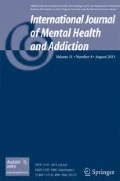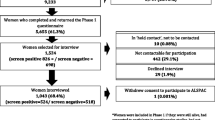Abstract
ADHD and eating disorders are both significant public health issues. Emerging evidence suggests that ADHD and eating disorders may be comorbid resulting in increased severity of associated health issues. Although several hypotheses have been proposed with respect to the underlying mechanisms of the comorbidity, there is a need for a conceptual model, which presents the simultaneous investigation of the trajectory of onset and multiple hypotheses. The current paper proposes an innovative conceptual model that can be used to simultaneously explore hypothesized underlying mechanisms by triangulating current literature with aspects of the biopsychosocial model, life course approach, Risk Regulator Framework, research domain criteria matrix, and the person-environment transaction theory. Designated within the model are proposed pathways that serve to describe how various psychosocial and psychiatric risk regulators and genetic risk factors combine to influence the comorbidity across the lifespan. The proposed conceptual model can provide the foundation for further research regarding comorbid ADHD and eating disorders in addition to translation for use among other comorbid conditions.

Similar content being viewed by others
References
American Psychiatric Association. (2013). Diagnostic and statistical manual of mental disorders (5th ed.). Arlington: American Psychiatric Publishing.
Ball, J., Biederman, S. W., Monuteaux, M. C., Surman, C. B., Johnson, J. L., & Zeitlin, S. (2007). Are girls with ADHD at risk for eating disorders? results from a controlled, five-year prospective study. Journal of Developmental and Behavioral Pediatrics, 28(4), 302–307.
Ben-Shlomo, Y., & Kuh, D. (2002). A life course approach to chronic disease epidemiology: conceptual models, empirical challenges and interdisciplinary perspectives. International Journal of Epidemiology, 31(2), 285–293.
Biederman, J., Petty, C. R., Monuteaux, M. C., Fried, R., Byrne, D., Mirto, T., . . . Faraone, S. V. (2010). Adult Psychiatric Outcomes of Girls With Attention Deficit Hyperactivity Disorder: 11-Year Follow-Up in a Longitudinal Case–control Study. American Journal of Psychiatry, 167(4), 409–417
Bleck, J. R., Debate, R. D., & Olivardia, R. (2014). The Co-occurrence of ADHD and Eating Disorders in a Nationally Representative Sample. Journal of Behavioral Health Services & Research, 1–15.
Blinder, B. J., Cumella, E. J., & Sanathara, V. A. (2006). Psychiatric comorbidities of female inpatients with eating disorders. Psychosomatic Medicine, 68(3), 454–462.
Blum, K., & Noble, E. (2001). Reward deficiency syndrome (RDS): a biogenic model for the diagnosis and treatment of impulsive, addictive, and compulsive behaviors. Paper presented at the Molecular psychiatry
Borrell-Carrió, F., Suchman, A. L., & Epstein, R. M. (2004). The biopsychosocial model 25 years later: principles, practice, and scientific inquiry. The Annals of Family Medicine, 2(6), 576–582.
Caspi, A., & Roberts, B. W. (1990). Personality continuity and change across the life course. Handbook of personality: Theory and research, 300–326.
Caspi, A., & Roberts, B. W. (2001). Personality development across the life course: the argument for change and continuity. Psychological Inquiry, 12(2), 49–66.
Comings, D. E., & Blum, K. (2000). Reward deficiency syndrome: genetic aspects of behavioral disorders. Progress in Brain Research, 126, 325–341.
Cortese, S., B. D., B., & Mouren, M. C. (2007). Attention-deficit/hyperactivity disorder (ADHD) and binge eating. Nutrition Reviews, 65(9), 404–411.
Cortese S, Angriman, M., Maffeis, C., Isnard, P., Konofal, E., Lecendreux, M., . . . Mouren, M.-C. (2008). Attention-deficit/hyperactivity disorder (ADHD) and obesity: a systematic review of the literature. Critical reviews in food science and nutrition, 48(6), 524–537.
Davis, C., Levitan, R. D., Smith, M., Tweed, S., & Curtis, C. (2006). Associations among overeating, overweight, and attention deficit/hyperactivity disorder: a structural equation modelling approach. Eating Behaviors, 7(3), 266–274.
Elder, G. H., Johnson, M. K., & Crosnoe, R. (2003). The emergence and development of life course theory. Handbook of the Life Course, 3–19.
Engel, G. L. (1980). The clinical application of the biopsychosocial model. The American Journal of Psychiatry, 137(5), 535–544.
Fernández-Aranda, F., Agüera, Z., Castro, R., Jiménez-Murcia, S., Ramos-Quiroga, J. A., Bosch, R., . . . Claes, L. (2013). ADHD symptomatology in eating disorders: a secondary psychopathological measure of severity? BMC psychiatry, 13(1), 166.
Glass, T. A., & McAtee, M. J. (2006). Behavioral science at the crossroads in public health: extending horizons, envisioning the future. Social Science & Medicine, 62(7), 1650–1671.
Haines, J., & Neumark-Sztainer, D. (2006). Prevention of obesity and eating disorders: a consideration of schared risk factors. Health Education Research, 21(6), 770–782.
Hudson, J. I., Hiripi, E., Pope, H. G., Jr., & Kessler, R. C. (2007). The prevalence and correlates of eating disorders in the national comorbidity survey replication. Biological Psychiatry, 61(3), 348–358.
Insel, T. R., Cuthbert, B. N., Garvey, M. A., Heinssen, R. K., Pine, D. S., Quinn, K. J., . . . Wang, P. S. (2010). Research domain criteria (RDoC): toward a new classification framework for research on mental disorders. American Journal of Psychiatry, 167(7), 748–751.
Kessler, R. C., Adler, L., Barkley, R., Biederman, J., Conners, C. K., Demler, O., . . . Secnik, K. (2006). The prevalence and correlates of adult ADHD in the United States: results from the National Comorbidity Survey Replication. Am J Psychiatry, 163(4), 716.
LaHoste, G., Swanson, J., Wigal, S., Glabe, C., Wigal, T., King, N., & Kennedy, J. (1996). Dopamine D4 receptor gene polymorphism is associated with attention deficit hyperactivity disorder. Molecular Psychiatry, 1(2), 121–124.
Mattos, P., Saboya, E., Ayrão, V., Segenreich, D., Duchesne, M., & Coutinho, G. (2004). Comorbid eating disorders in a Brazilian attention-deficit/hyperactivity disorder adult clinical sample. Revista Brasileira de Psiquiatria, 26(4), 248–250.
Mikami, A. Y., Hinshaw, S. P., Patterson, K. A., & Lee, J. C. (2008). Eating pathology among adolescent girls with attention-deficit/hyperactivity disorder. Journal of Abnormal Psychology, 117(1), 225–235.
Morris, S. E., & Cuthbert, B. N. (2012). Research domain criteria: cognitive systems, neural circuits, and dimensions of behavior. Dialogues in Clinical Neuroscience, 14(1), 29.
National Eating Disorder Association. (n.d.). Health Consequences of Eating Disorders. Retrieved on March 24, 2013 from http://www.nationaleatingdisorders.org/health-consequences-eating-disorders.
National Institute of Mental Health. (2008). Attention Deficit Hyperactivity Disorder (ADHD). In National Institute of Mental Health (Ed.), (Vol. no. 08–3572): National Institutes of Health.
National Institutes of Mental Health. (n.d.). RDoC Constructs. Retrieved September 21, 2013, from http://www.nimh.nih.gov/research-priorities/rdoc/rdoc-constructs.shtml - acute_threat
Nazar, B. P., Pinna, C., Coutinho, G., Segenreich, D., Duchesne, M., Appolinario, J. C., & Mattos, P. (2008). Review of literature of attention-deficit/hyperactivity disorder with comorbid eating disorders. Revista Brasileira de Psiquiatria, 30, 384–389.
Neumark-Sztainer. (2003). Obesity and eating disorder prevention: an integrated approach? Adolescent medicine (Philadelphia, Pa.), 14(1), 159.
Neumark-Sztainer, D., Wall, M., Guo, J., Story, M., Haines, J., & Eisenberg, M. (2006). Obesity, disordered eating, and eating disorders in a longitudinal study of adolescents: how do dieters fare 5 years later? Journal of the American Dietetic Association, 106(4), 559.
Neumark-Sztainer, D. R., Wall, M. M., Story, M. T., Haines, J. I., Sherwood, N. E., & Berg, V. D. (2007). Shared risk and protective factors for overweight and disordered eating in adolescents. American Journal of Preventive Medicine, 33(5), 359–369.
Noble, E. P. (2003). D2 dopamine receptor gene in psychiatric and neurologic disorders and its phenotypes. American Journal of Medical Genetics Part B: Neuropsychiatric Genetics, 116(1), 103–125.
Peebles, R., Hardy, K. K., Wilson, J. L., & Lock, J. D. (2010). Are diagnostic criteria for eating disorders markers of medical severity? Pediatrics, 125(5), e1193–e1201.
Poston, W., Ericsson, M., Linder, J., Haddock, C., Hanis, C., Nilsson, T., . . . Foreyt, J. (1998). D4 dopamine receptor gene exon III polymorphism and obesity risk. Eating and weight disorders: EWD, 3(2), 71–77.
Quinn, P. (2008). Attention-deficit/hyperactivity disorder and its comorbidities in women and girls: an evolving picture. Current Psychiatry Reports, 10(5), 419–423.
Reba-Harrelson, L., Von Holle, A., Hamer, R., Swann, R., Reyes, M., & Bulik, C. (2009). Patterns and prevalence of disordered eating and weight control behaviors in women ages 25–45. Eating and Weight Disorders: EWD, 14(4), e190.
Smalley, S., Bailey, J., Palmer, C., Cantwell, D., McGough, J., Del'Homme, M., . . . Nelson, S. (1998). Evidence that the dopamine D4 receptor is a susceptibility gene in attention deficit hyperactivity disorder. Molecular psychiatry, 3(5), 427–430.
Sobanski, E., Brüggemann, D., Alm, B., Kern, S., Deschner, M., Schubert, T., . . . Rietschel, M. (2007). Psychiatric comorbidity and functional impairment in a clinically referred sample of adults with attention-deficit/hyperactivity disorder (ADHD). European Archives of Psychiatry and Clinical Neuroscience, 257(7), 371–377
Striegel‐Moore, R. H., & Franko, D. L. (2003). Epidemiology of binge eating disorder. International Journal of Eating Disorders, 34(S1), S19–S29.
Swanson, J., Sunohara, G., Kennedy, J., Regino, R., Fineberg, E., Wigal, T., . . . Wigal, S. (1998). Association of the dopamine receptor D4 (DRD4) gene with a refined phenotype of attention deficit hyperactivity disorder (ADHD): a family-based approach. Molecular psychiatry, 3(1), 38–41.
U.S. Department of Health and Human Services. (2012). Office of Disease Prevention and Health Promotion. Healthy People 2020. Washington, DC.
Visser, S. N., Danielson, M. L., Bitsko, R. H., Holbrook, J. R., Kogan, M. D., Ghandour, R. M., . . . Blumberg, S. J. (2014). Trends in the Parent-Report of Health Care Provider-Diagnosed and Medicated Attention-Deficit/Hyperactivity Disorder: United States, 2003–2011. Journal of the American Academy of Child & Adolescent Psychiatry, 53(1), 34–46. e32.
Wade, T. D., Keski‐Rahkonen, A., & Hudson, J. I. (2011). Epidemiology of eating disorders (pp. 343–360). Third Edition: Textbook in Psychiatric Epidemiology.
Wang, G.-J., Volkow, N. D., & Fowler, J. S. (2002). The role of dopamine in motivation for food in humans: implications for obesity. Expert Opinion on Therapeutic Targets, 6(5), 601–609.
Wentz, E., Lacey, J., Waller, G., Råstam, M., Turk, J., & Gillberg, C. (2005). Childhood onset neuropsychiatric disorders in adult eating disorder patients. European Child & Adolescent Psychiatry, 14(8), 431–437.
Yates, W. R., Lund, B. C., Johnson, C., Mitchell, J., & McKee, P. (2009). Attention-deficit hyperactivity symptoms and disorder in eating disorder inpatients. International Journal of Eating Disorders, 42(4), 375–378.
Author information
Authors and Affiliations
Corresponding author
Rights and permissions
About this article
Cite this article
Bleck, J., DeBate, R., Levin, B.L. et al. Underlying Mechanisms and Trajectory of Comorbid ADHD and Eating Disorders: Proposing an Innovative Systems Framework for Informing Research. Int J Ment Health Addiction 14, 449–458 (2016). https://doi.org/10.1007/s11469-015-9593-7
Published:
Issue Date:
DOI: https://doi.org/10.1007/s11469-015-9593-7



